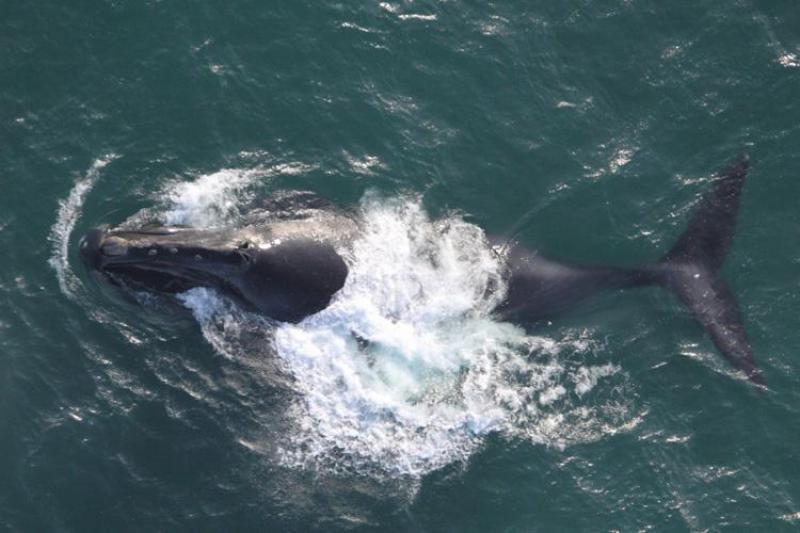NOAA Fisheries is initiating a review of designated critical habitat for endangered North Pacific right whales, of which there are only an estimated 30 animals remaining. The review is in response to a petition we received on March 10, 2022 from the Center for Biological Diversity and Save the North Pacific Right Whale. The petition requested a revision to the critical habitat designation for the species.
Currently, NOAA Fisheries has designated approximately 1,175 square miles in the Gulf of Alaska and approximately 35,460 square miles in the Southeast Bering Sea as critical habitat for North Pacific right whales.
The petition requests we revise this critical habitat to connect the two existing critical habitat areas. This would entail extending the Southeast Bering Sea boundary west and south to the Fox Islands, through Unimak Pass to the edge of the continental slope. It would also be extended east to the Gulf of Alaska critical habitat area off the coast of Kodiak Island.
The requested expansion of critical habitat overlaps with productive fishing areas and high-volume maritime transit routes.
The petition includes information on the movement and behavior of the species in and around the currently designated critical habitat since the original designation in 2008. This information comes from a combination of visual sightings and acoustic data.
The petitioners assert that the data support the requested revision, the goal of which is to encompass a “key migratory point” and provide “connectivity between two essential foraging grounds.” The petitioners state that the physical and biological features in the proposed revised critical habitat require special management considerations and protections.
We find the petition provides substantial scientific information indicating that revision of critical habitat may be warranted. We are hereby initiating a review to determine whether revising the critical habitat designation is warranted. This review will combine the best scientific data available in our files from when critical habitat was originally designated in 2008 to when we received the petition in March 2022, in conjunction with information we receive during the public comment period. The conclusion of our review will be reported in a 12-month finding, which will be published in the Federal Register. Should we conclude that a revision to critical habitat for North Pacific right whales is warranted, there will be another opportunity for the public to submit comments and information once we publish a proposed rule describing the revision.
Background
North Pacific right whales are one of the rarest of all large whale species. Scientists estimate that, of those that visit Alaska’s waters, only about 30 individuals remain.
The North Pacific right whale has been listed as endangered under the Endangered Species Act since 1973.
In May 2008, we issued a final rule designating critical habitat for North Pacific right whales in the Gulf of Alaska and the Southeast Bering Sea.
At the time of designation, there were significant gaps in the knowledge of North Pacific right whale biology and ecology, and little was known about the physical and biological habitat features that might be essential for their conservation.
However, based on examination of harvested whales and plankton tows conducted near feeding whales, it was known that several species of large copepods and other zooplankton constitute the primary prey of North Pacific right whales diet. The physical and biological features identified for North Pacific right whales in 2008 were copepods in areas where right whales are known or thought to feed.
We also concluded it is likely that certain physical forcing mechanisms are present in these areas that act to concentrate the identified prey species in densities which allow for efficient foraging by right whales.
Learn more about what research we are currently conducting to better understand the species
How to Comment
To ensure that our review of North Pacific right whale critical habitat is complete and based on the best available scientific and commercial information, we are soliciting new information. Members of the public, governmental agencies, tribes, the scientific community, industry, environmental entities, and any other interested parties can comment.
Scientific and commercial information pertinent to the petitioned action must be received by close of business on September 12, 2022.
You may submit comments, information, or data on this document by:
- Commenting on the document on Regulations.gov
- Submitting written information to: Jon Kurland, Alaska Regional Administrator, NOAA Fisheries, Attn: Records Office, P.O. Box 21668, Juneau, AK 99802-1668




